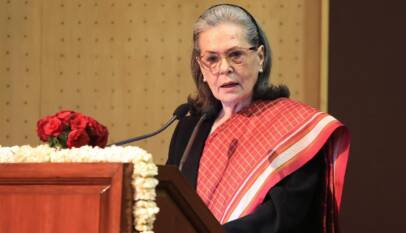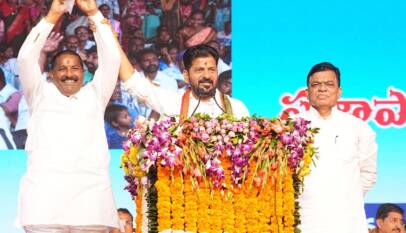Understanding the cultural importance, for a Community Builder
Written by Suvro Sanyal.
The world is becoming increasingly diverse and includes people of many religions, languages, economic groups, and other cultural groups.
It is becoming clear that, while building & strengthening communities that are successful at improving conditions and resolving problems, we need to understand and appreciate many cultures, establish relationships with people from cultures other than our own, and build strong alliances with different cultural groups. Additionally, we need to bring non-mainstream groups into the mainstream of civic activity.
Reasons for understanding the cultural importance:
- In the process of building communities that, are powerful enough to attain significant change, we need large numbers of people working together. If cultural groups join forces, they will be more effective in reaching common goals, than if each group operates in isolation.
- Each cultural groups have unique strengths and perspectives that the larger community can benefit from. We need a wide range of ideas, customs, and wisdom to solve problems and enrich community life. Bringing non-mainstream groups into the mainstream of civic activity can provide fresh perspectives and shed new light on tough problems.
- Understanding cultures will help us in overcoming and preventing racial and ethnic divisions. Racial and ethnic divisions result in misunderstandings, loss of opportunities, and sometimes violence, causing conflicts, along-with exhausting financial and human resources; they distract cultural groups from resolving the key issues they have in common.
- People from different cultures needs to be included in decision-making processes enabling programs or policies to be effective. The people affected by a decision needs to be involved in formulating solutions which is a basic democratic principle. Without the input and support of all the groups involved, decision-making, implementation, and follow through are much less likely to occur.
- An appreciation of cultural diversity goes together for a just and equitable society. Research has shown that when students’ cultures are understood and appreciated by teachers, the students do better in school. Students feel more accepted, they feel part of the school community, they work harder to achieve, and they are more successful in school.
- If we do not learn about the influences that cultural groups have had on our mainstream history and culture, we are all missing out on an accurate view of our society and our communities.
While thinking of diversity, the kind of cultural community needed to be built, is a must which is to be envisioned.
Kind of cultural community needed to be envisionate:
As one envisionate the kind of diverse community, themselves and, their neighbours may want to ruminate and frame sets of questions. These questions help in pondering some anticipatory frictions arising as they try to build harmonious, active, and diverse communities in a country as a complex as ours. There are no obvious answers to such questions, since the learning process is inevitably continuous.
So, what kind of community does one envisionate for themself? How will diversity be approached in their community?
If one could have their ideal community at the outset, what would it look like?
If one could not have their ideal community right now, what steps needed in building the kind of cultural community one wants to?
Some important questions proven to be path breaking while thinking about building & strengthening a community:
- Who lives in the community right now?
- What kinds of diversity already exists?
- What kinds of relationships are established between cultural groups?
- Are the different cultural groups well organised?
- What kind of frictions exists between cultures?
- What kind of struggles exist within cultural groups?
- Are these struggles openly recognised and ruminated?
- Are there efforts to build alliances and coalitions between groups?
- What issues do different cultural groups have in common?
Commencing building a Diverse Community:
While creating a favourable environment for building diverse communities, the following principles are envisaged as a reckoning:
WELCOME EVERYONE –
spearheading a campaign involving people in committing to work on diversity, every person needs to feel that are they will be exclusive & inclusive and important. Each person needs to feel welcomed in the effort to create a diverse community. And each person needs to know that their culture is important to others.
GUILT DOESN’T WORK IN FOSTERING DIVERSITY –
Blaming people as a way of motivating them; Shaming people for being in a privileged position; does not empower anyone to act in the change. People are more likely to change when their deeds are lauded, adulated and, not condemned or guilt-tripped.
TREATING EVERYONE THE SAME MAY BE UNINTENTIONALLY OPPRESSIVE –
Although every person is unique, some of them may have been mistreated or oppressed because he is pertinent to a particular group. If these present-day or historical differences are ignored, the needs of those individuals are unaddressed. Often people are afraid that recognising differences would divide people from each other. However, learning about cultural differences can bring people closer together, because it can reveal important parts of each other’s lives.
PEOPLE CAN TAKE ON TOUGH ISSUES MORE READILY WHEN THE ISSUES ARE PRESENTED WITH A SPIRIT OF HOPE –
Newspapers and TV reports of doom and gloom are bombarded on regular basis. People have a difficult time functioning at all, when they feel there is no hope for change. When someone presents diversity issues, an optimistic addressal like, “This is an excellent opportunity to build on the strengths that this organisation has,” or “There is no reason why we can’t solve this problem together,” adds value to the presented proposal.
BUILDING A TEAM AROUND US IS THE MOST EFFECTIVE WAY OF CREATING INSTITUTIONAL AND COMMUNITY CHANGE AROUND DIVERSITY ISSUES –
One proves to be more effective if, he has a group of people around him working closely together. People often try to accomplish it all alone, but can lose sight of their goals and then become discouraged when operating solo. It is important to take the time to develop strong relationships with a core of people, and then work together as a group.
RECOGNIZE AND WORK WITH THE DIVERSITY ALREADY PRESENT IN WHAT APPEAR TO BE HOMOGENOUS GROUPS –
While striving to create a diverse group, recognising differences in religion, sexual orientation, socio-economics, parenting, and class backgrounds, helps creating a climate that disallows differences; it will also lay the groundwork for becoming more inclusive.
Thus, each of us can build the kind of community we dream of. In our families, organisations, institutions, and neighbourhoods, we can insist that we won’t remain isolated from those who are different from ourselves. We can transform our neighbourhoods, institutions, and governments into equitable, non-oppressive, and diverse communities.
To be continued……………

Writer Suvro Sanyal
Mavericknews30 has launched a series of articles on community building, sharing insights and success stories. Stay tuned for the next article as we explore how to create stronger, more connected communities!
Log on : www.mavericknews30.com
Follows us on : Twitter @mavericknews30
YouTube : @MarvickNews30
PM Modi Presents Russian President Putin with Curated Gifts Reflecting India’s Culture and Heritage
New Delhi, Dec 2025: During the two-day visit of Russian President Vladimir Putin to India…




















